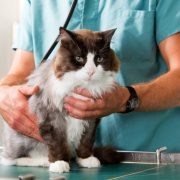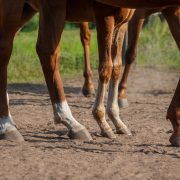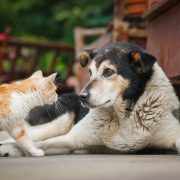Survey of current UK alpaca husbandry practices: Vaccination, treatment and supplementation
Survey of current UK alpaca husbandry practices: Vaccination, treatment and supplementation

Open access
In our edition of: Feb 2024
In our categories of: farm animals
our summary:
Middleton, A. et al. (2023) Survey of current UK alpaca husbandry practices: Vaccination, treatment and supplementation. Veterinary Record, p. e3602. https://doi.org/10.1002/vetr.3602
The aim of this survey study was to investigate what routine husbandry procedures are currently carried out on alpacas in the UK.
The online survey, which was open from March to July 2022, was distributed to members of the British Alpaca Society (BAS) via their e-newsletter and promoted on social media. It consisted of 47 questions covering demographics, husbandry and management procedures and anthelmintic usage.
There were 116 responses available for analysis, of which 111 (94.8%) responses were from the owners of the alpacas. The most common holding size was 21–50 alpacas, 48.2% of respondents had a herd size under 20 and 6.0% had over 100 alpacas on their holdings. Most holdings owned alpacas of all ages.
All 116 holdings implemented shearing, with 103 (88.8%) shearing in May and June. Foot trimming was also carried out at all holdings with 88 (75.9%) trimming as needed. Microchipping their alpacas was reported by 106 (91.4%) respondents. Most of the respondents (111, 95.7%) vaccinated against clostridial disease, with most of those vaccinating yearly. The majority of holdings (95.5%, 105/110) had not knowingly had animals suffer from clostridial disease.
Vitamin D supplements were administered by 106 (91.4%) respondents. There was a significant positive association between the size of holding and the use of oral or injectable vitamin D, with smaller holdings preferring oral vitamin D products.
Limitations of the study include the omission of questions on procedures such as ear tagging, body condition scoring and dental trimming as well as the lack of specific detailed questions on the dosing of vitamin D dependent on fibre colour. The high number of microchipped alpacas in the study suggests that a high proportion of participants were BAS members as microchipping is a requirement of BAS registration, thus the results may not be generalisable to non BAS registered alpaca owners.
This study provides evidence that whilst alpaca owners are ensuring routine husbandry procedures are being implemented the variety of responses indicates that there is no standard protocol that is being followed. Further research that could help to establish best practice recommendations, particularly in relation to vaccination and vitamin D supplementation, is needed.
The following may also be of interest:
French, S., Sawran, A. and Betson, M. (2021) Survey of anthelmintic use in South American camelids in the UK. Veterinary Record, 189 (11, e774. https://doi.org/10.1002/vetr.774
Lopez, B. (2021) Approach to veterinary management of adult camelids. In Practice, 43 (6), pp.329-337. https://doi.org/10.1002/inpr.81
Claiming CPD for reading inFOCUS articles
Reading and reflecting on articles can count towards your CPD, and we have a template to help you with the process.
Image copyright attribute: klamatatratip








Leave a Reply
Want to join the discussion?Feel free to contribute!